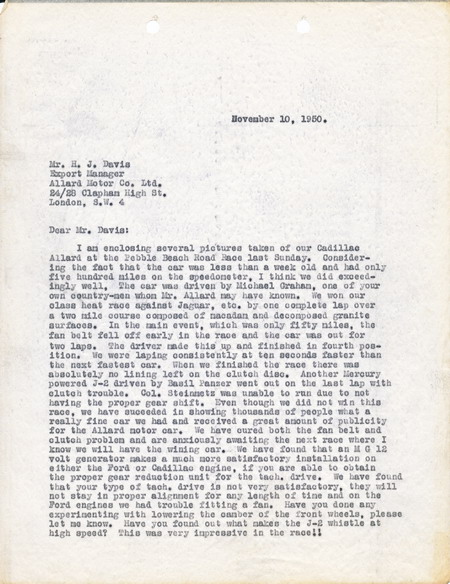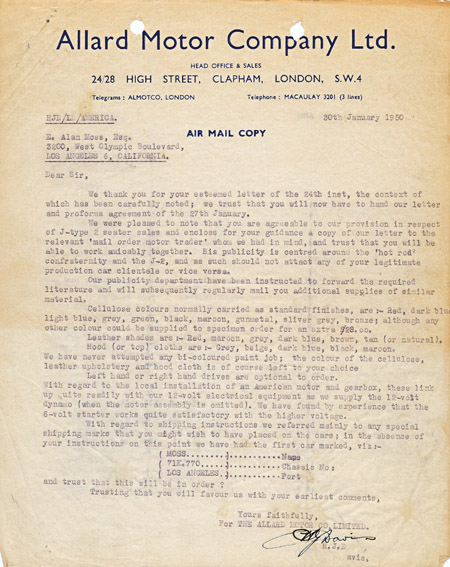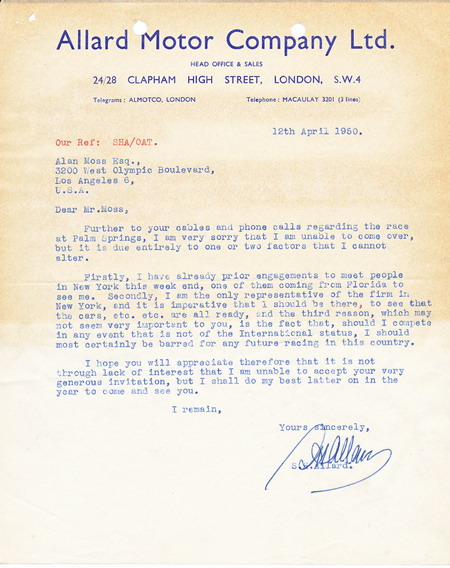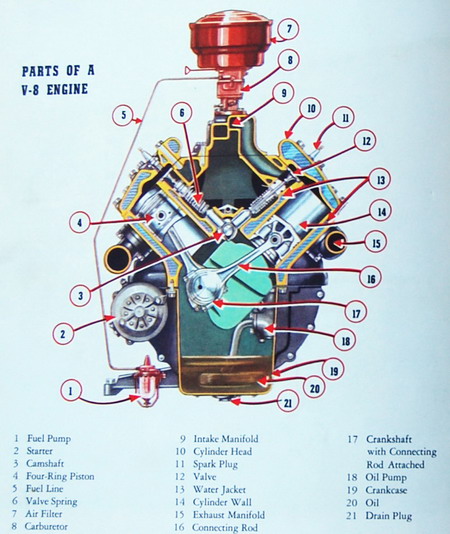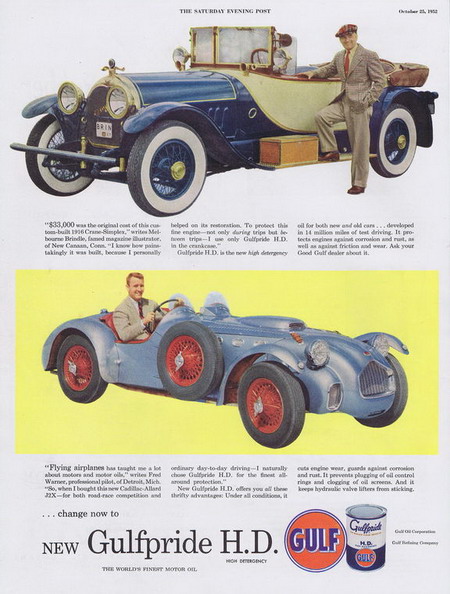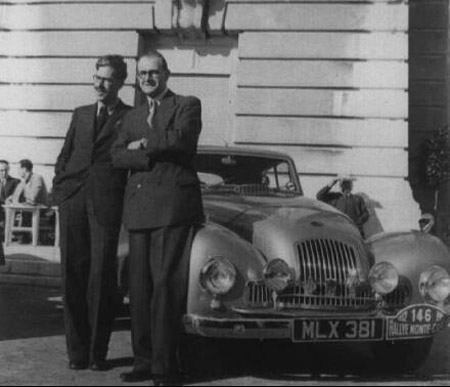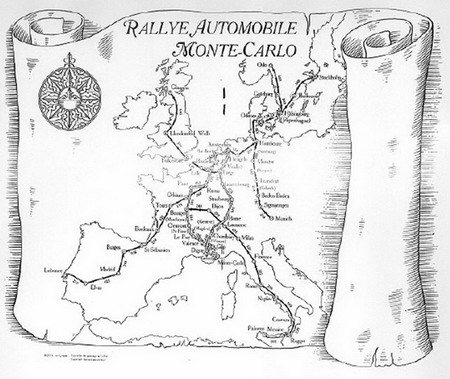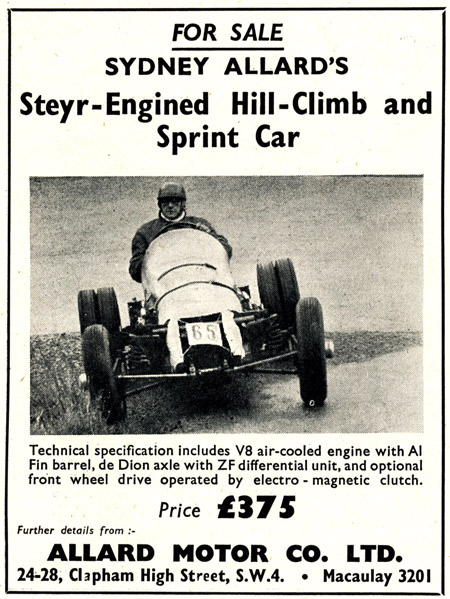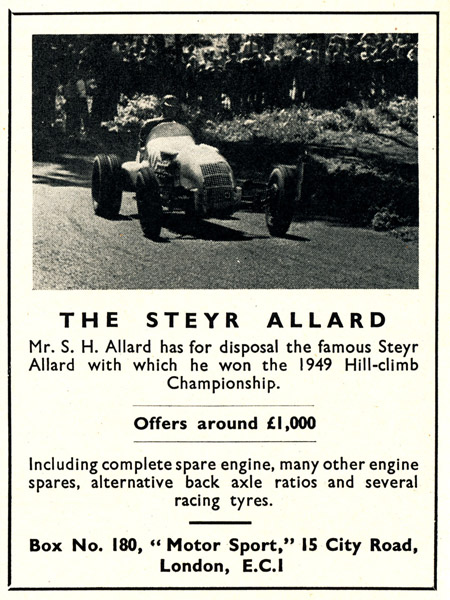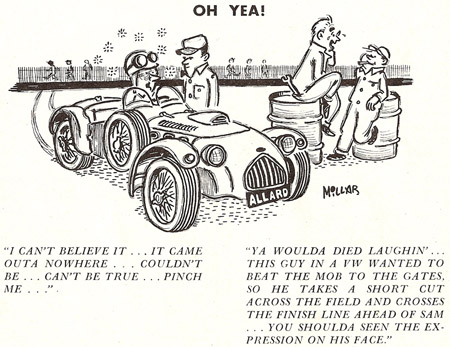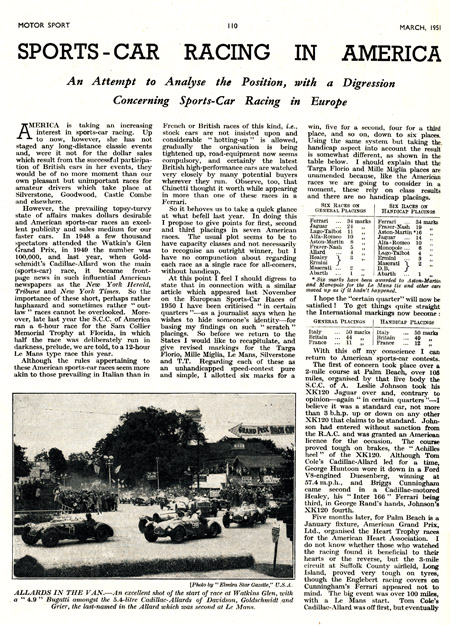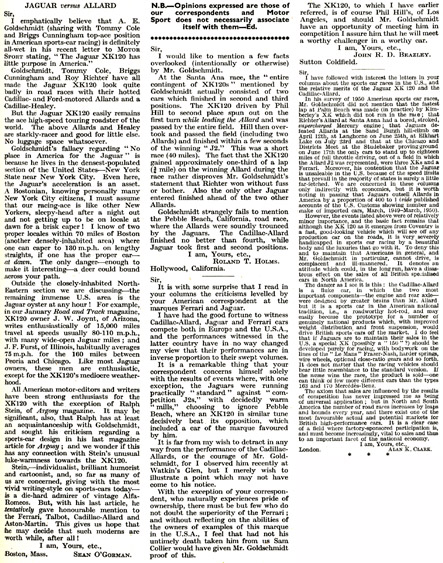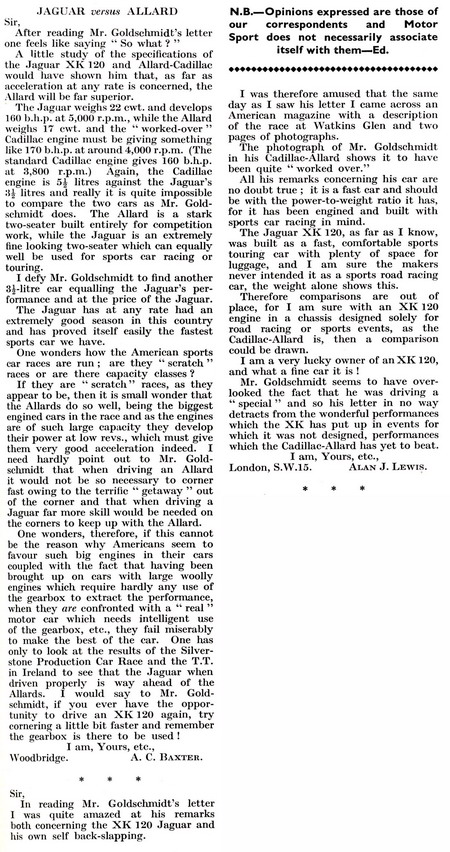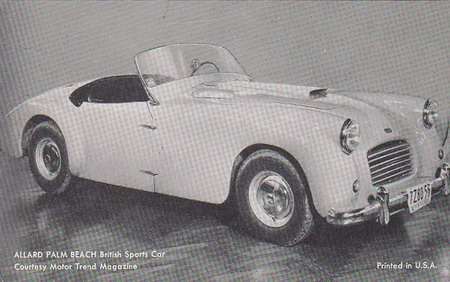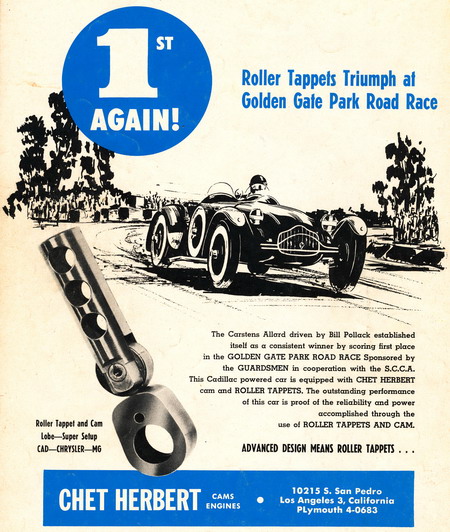The Allard of the Future
/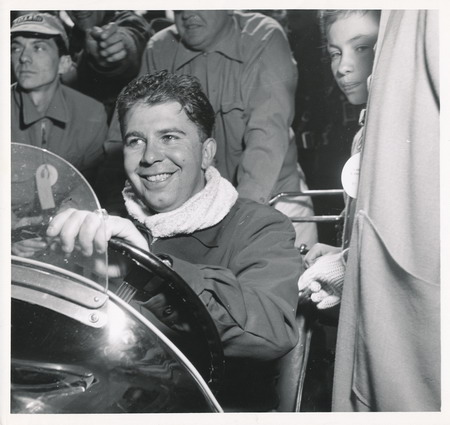
The following is a imaginative look at what an Allard might be like today. This concept is brought to us by none other than famed Allard racer Bill Pollack (seen above winning the 1950 Pebble Beach Road Race). You can imagine the impact that racing these beasts has had on Mr. Pollack...where he still imagines them tearing up the tracks and turning the automotive world inside out. Thank you Bill!
I have often wondered what prompted Sydney Allard, to build a sports car. In the late 30s and 40s he was involved in a sport known as “Trials”. It was very popular in Great Britain. The trials consisted of 2 men, in a small car trying to negotiate deep mud. Often, the participants would find themselves heavily mired in an endless sea of the sticky stuff. Mostly, the cars were Austin 7’s or the like, with tiny engines, low power and little to say for themselves. The enthusiasts, would strip the fenders, lights, windshields etc. to lighten the cars as much as possible. I am sure, that Allard quickly noticed that those cars with the somewhat larger engines probably did better.


